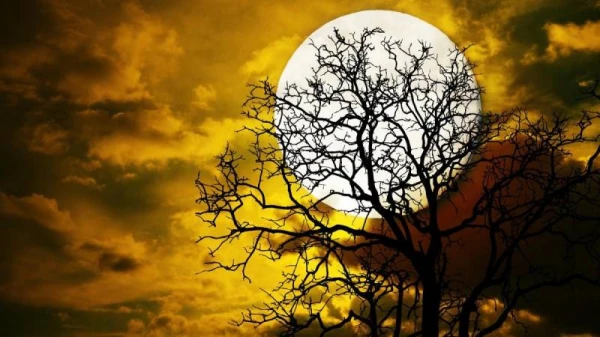
On November 5, 2025, Earthlings will be able to observe the "Beaver" supermoon. This is the last supermoon of the year when the Earth's satellite is simultaneously in its full phase and at perigee - the closest point in its orbit to our planet.
Halloween is over, but the nights remain mystical: on November 5, the "beaver" Moon will appear in the sky. It will come particularly close to Earth, making it appear larger and brighter than usual.
The full moon on November 5, 2025, will be a supermoon - and not just any supermoon, but the largest of the year. The full Moon will look 7.9% larger and 16% brighter than usual.
According to the Astronomical Society (VdS), at 11:16 PM on Wednesday, the Moon will be just 356,400 kilometers away from Earth. In comparison, the average distance is over 400,000 kilometers.
However, this difference is not as impressive as it seems at first glance. "For most people, the difference in size between a supermoon and a regular full moon is hard to perceive," explained astronomer Caroline Lifke to dpa.
When the Moon is close to the horizon, it appears particularly large. But this is purely a matter of perception: this phenomenon is known as the lunar illusion. If you compare photos of the low Moon with photos of the same Moon high in the sky, the sizes will be the same - the difference lies in our perception.
One common theory explains this as follows: on the horizon, we perceive the Moon relative to the landscape - for example, trees, mountains, or buildings. Because of this, it seems larger. However, when it is high in the sky, this depth information is absent, and the Moon appears smaller and farther away.
Why is the November Full Moon Called the "Beaver Moon"?
The terms "Beaver Moon" and "Fog Moon" do not refer to the current supermoon but to the November full moon in general. Like each of the twelve full moons in the year, it has names that originated from ancient observations of nature and agriculture.
In Germany, the November full moon is often called the "Fog Moon" - a reference to the typical autumn weather with thick mist early in the morning. Such names have been used in the past for time orientation, long before calendars became widespread.
The term "Beaver Moon," on the other hand, comes from North America. According to the astronomical service Starwalk, it dates back to Indigenous peoples and early settlers. In November, beavers are particularly active: they build dams, prepare their lodges, and stock up for winter. Hunters traditionally set beaver traps at this time of year to obtain pelts.
In the "Farmer's Almanac," a traditional calendar in the U.S., the "Beaver" Moon is also described as a symbol of the transition to the winter months when nature goes into a state of dormancy.
In addition to the "Beaver Moon" and "Fog Moon," the November full moon is also known in old traditions as the "Frost Moon," "Wind Moon," "Snow Moon," or "Mourning Moon." The latter term refers to the time of remembrance for the deceased, which is observed in many places in November.
Astrologer Fi Weber explained in an interview with RTL that these names are inspired by "typical activities" in the corresponding seasons - for example, the "Harvest" Moon in September or the "Strawberry" Moon in June. Thus, the names reflect a close connection to nature and the cycles of the year.
In 2025, the "Beaver" supermoon will occur on November 5 at 4:19 PM Moscow time. However, to the naked eye, the Moon will appear full all night, even the day before and after the exact date.
This phenomenon can be observed with the naked eye on a clear night. It is recommended to use binoculars or a telescope, which will allow for a better view of specific areas on the side of the Moon facing Earth.
In addition to the supermoon, several meteor showers can be observed in November. The peak activity of the Southern Taurids is expected on the night of November 4-5, while the Northern Taurids will peak on November 12. During the peak activity, no more than five meteors can be seen per hour. A feature of the Northern Taurids is the presence of bright fireballs. The peak activity of the Leonids is expected on November 17-18.















Leave a comment